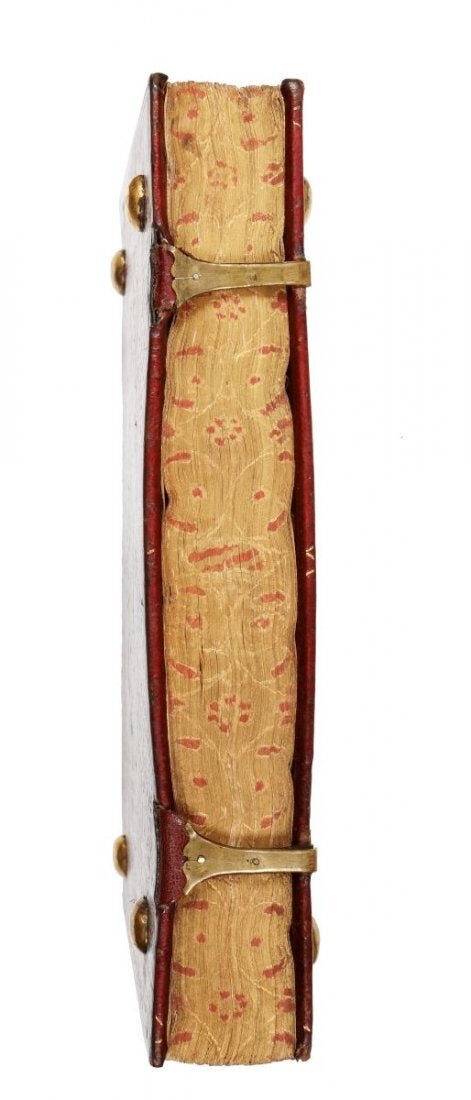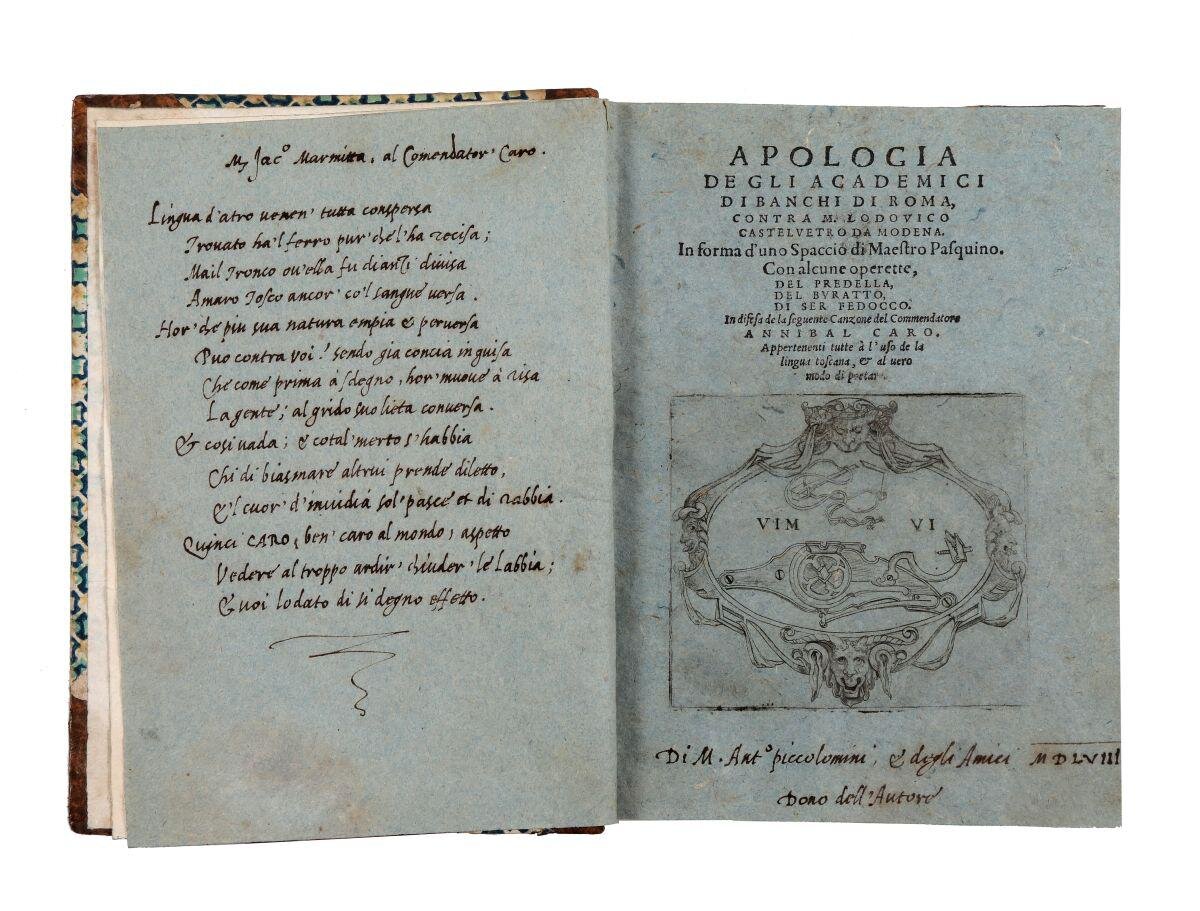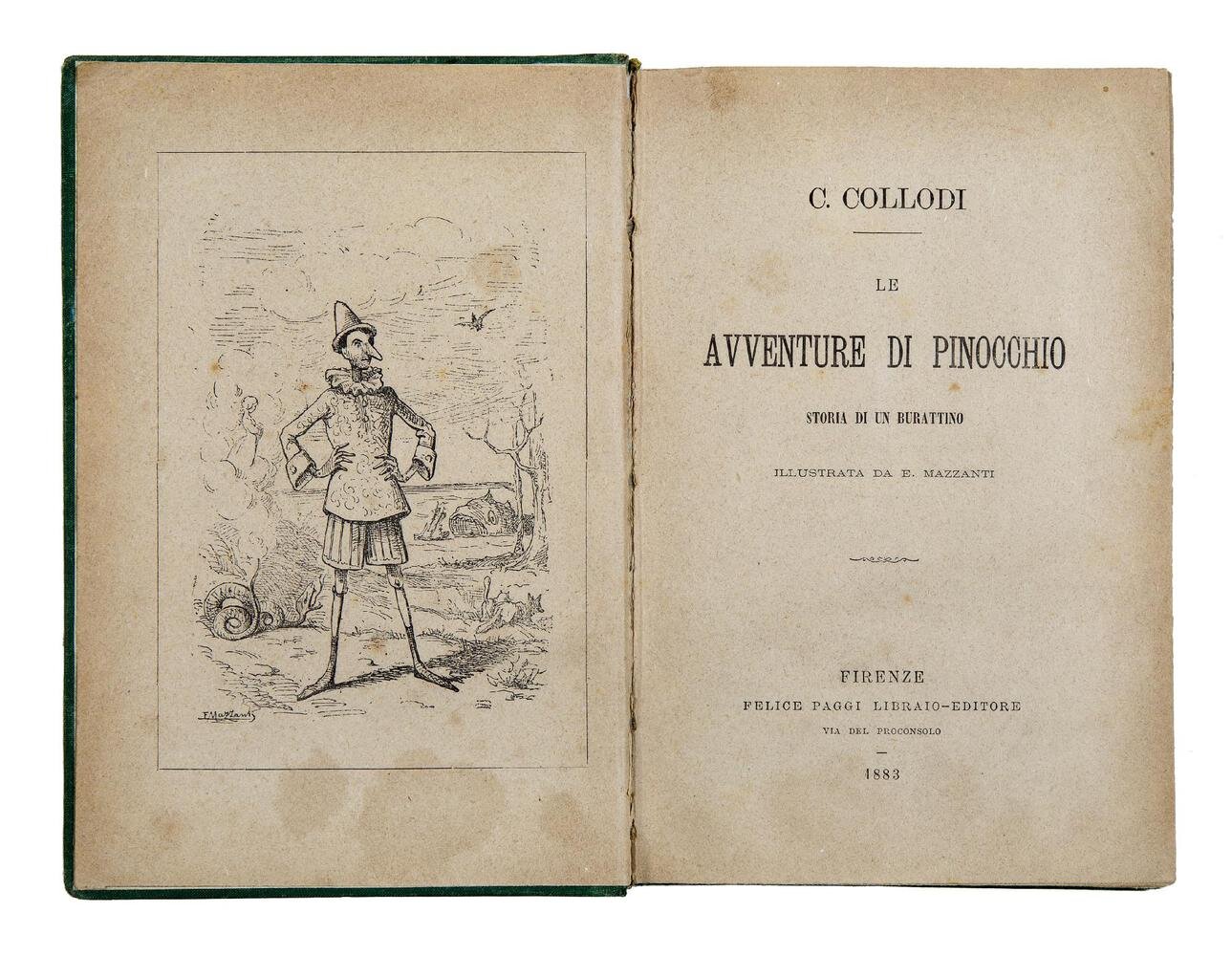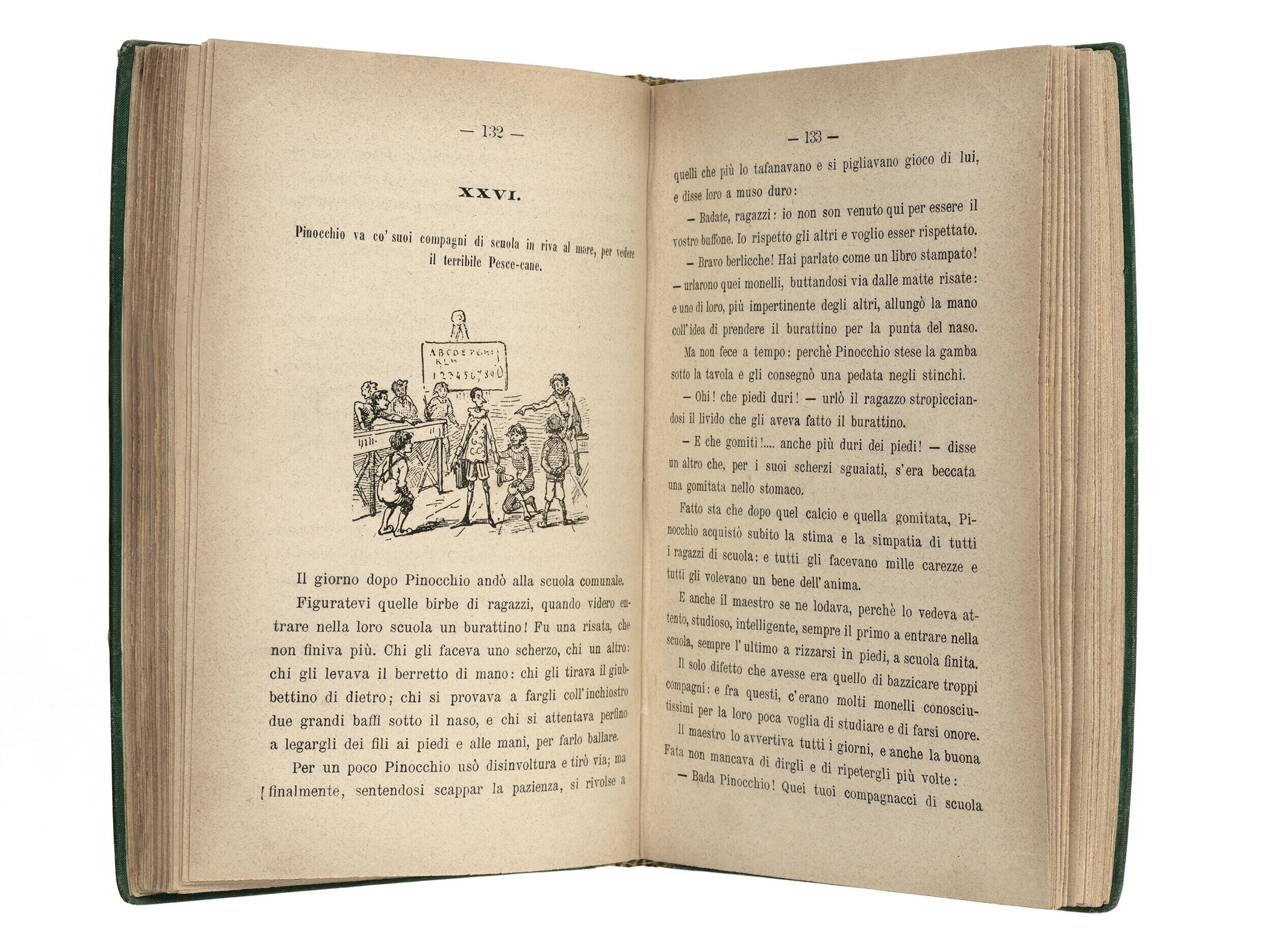A selection of books for the upcoming ‘Italian Book’ exhibition
Some of the highlights to be seen at this summer’s great exhibition to be held at the Biblioteca Nazionale Centrale di Roma in June-July 2020
This past weekend, a selection of our titles chosen for the upcoming exhibition on the Italian book, The Italian bibliographical heritage in libraries, the antiquarian book trade and private collections—to be held at the Biblioteca Nazionale Centrale di Roma in June-July 2020—were featured at Milan’s Salone della Cultura.
A collaborative effort organised by the National Library in close partnership with the Associazione Librai Antiquari d’Italia (A.L.A.I.), the exhibition will celebrate the importance and prestige of the Italian book by revealing the rich cultural history of the country’s bibliographical heritage. In relaying this story, the exhibition will bring together bibliographic gems from a variety of sources, emphasizing the ways in which the worlds of private collecting and the antiquarian book trade are woven together with the history of Italian institutional libraries. Read more about the exhibition here.
Giordano Bruno (1548-1600).
Figuratio Aristotelici Physici auditus... Ad illustrem admodum atque reuerendum dominum D. Petrum Dalbenium Abbatem Belleuillae. Paris, Pierre Chevillot, 1586. [bound with:]
Idem. Dialogi duo de Fabricii Mordentis Salernitani propè diuina adinuentione ad perfectam cosmimetriae praxim. Paris, Pierre Chevillot, 1586.
In Milan, along with the Aliotti manuscript offered to Pope Pius II and produced by the ‘King of Booksellers’, Vespasiano Da Bisticci; the typographical monument that is Augustine’s De Civitate Dei as printed by Conradus Sweynheym and Arnoldus Pannartz, and the two rarest editions of Giordano Bruno, described in last week’s post, we also exhibited a copy of the Venetian edition of Augustine’s De civitate Dei – specifically, the 1551 Quintus Tomus Operum D. Aurelii Augustini Hipponensis Episcopi, continens xxii. libros De ciuitate Dei, from the ten-volume edition issued in 1550-1552 – housed in a superb red morocco armorial binding executed for Pope Pius V, with his coat of arms and decoration recalling the late style of binder Niccolò Franzese, the great master employed by popes, cardinals and members of the Roman nobility (the full description of this copy is forthcoming).
Aurelius Augustinus (354-430).
Quintus tomus operum D. Aurelii Augustini Hipponensis Episcopi, contines XXII. libros de Civitate Dei. Cui accesserunt Commentarii Io. Ludo. Vivis ab Authore recogniti. Venetiis: ad Signum spei, 1551.
We also showed a highly interesting blue-paper copy of Annibal Caro’s Apologia de gli Academici di Banchi di Roma, contra M. Lodouico Casteluetro da Modena, printed in Parma in 1558, and given as a gift by the author himself to his friend Marco Antonio Piccolomini, a member of one of the most distinguished Sienese families and co-founder of the celebrated Accademia degli Intronati.
Also on display was a copy of the exceedingly rare first edition of Carlo Collodi’s Le avventure di Pinocchio, printed in 1883 and presented in its deluxe original publisher’s green cloth. The enduring children's classic about a marionette whose nose would grow each time he told a lie was first serialised in the children's magazine from Rome, Giornale per i bambini, under the direction of Ferdinando Martini: the first instalment appeared on 7 July 1881, and the last on 25 January 1883. Pinocchio was published as a book that same year, 1883, probably in a very small print run, and at least twelve reprints appeared during the first year of publication alone.
At the Salone della Cultura, we were also delighted to display books from private collections, including, among others, the exceedingly rare second edition of Machiavelli’s Principe (The Prince), a keystone of modern political theory and one of the most influential works in the history of modern thought. The Giuntina appeared on 8 May 1532, only four months after the appearance of its first edition, issued by Antonio Blado in Rome on 4 January. However, according to Bernardo Giunta’s preliminary address, the Florentine edition seems to have been the first ‘authorised’ edition, printed with the approval of Machiavelli’s heirs. The likewise rare first edition of Alessandro Manzoni’s Promessi Sposi, which appeared in Milan in 1827 (and generally known as the ‘Ventisettana edition’), was also present, in an exceptional copy including all twelve of the lithographed plates originally executed for illustrating the edition, now found in only a handful of copies.
New Titles Announced
Although not present at the Milan preview, we are also pleased to announce the addition of two more of our titles: the so-called ‘Mantegna Tarocchi’, a set of fifty engravings by the Masters of the Tarocchi produced in northern Italy (possibly Ferrara) before 1467, and a first edition of Pablo Neruda’s masterpiece, Los versos del capitan, published anonymously in 1952. The extremely rare and important complete set of the ‘Mantegna Tarocchi’ – exceptionally presented in its wide-margined book form – is one of the few Renaissance works of art, not only in the field of engraving, to fully express the life, customs, and indeed entire cultural world of the courtly and learned class of fifteenth-century Italy. On the other end of the chronological spectrum, the first edition of Neruda’s Los versos del capitan is one of the rarest twentieth-century books, issued in only forty-four copies printed for friends and subscribers. Owing to his protests against President González Videla's authoritarian policy, Neruda was forced to flee Chile for Europe; Los versos del capitan was written in 1952 during his exile on the island of Capri and published in Naples on 8 July 1952 – it would not be published in Chile until 1963.
This week, we are also delighted to announce a selection of outstanding works from the Biblioteca Nazionale Centrale di Roma that will be on display at this summer’s wonderful exhibition.
Among the manuscripts, one finds the celebrated “Aesinas codex” of Tacitus’ De vita Iulii Agricolae liber and De origine et moribus Germanorum (Ms. Vitt. Em. 1631), which contains the closest extant link to the original, 9th-century text of the Agricola; an early 14th century, richly illuminated manuscript of Gioacchino da Fiore’s Expositio in Isaiam, replete with fantastic visions and terrifying creatures (Ms. Vitt. Em. 1502); a transcription of Cicero’s Tusculanae disputationes once belonging to Francesco Petrarca and containing autograph notes by him and Giovanni Malpaghini (Ms. Vitt. Em. 1632); one of the oldest treatises on the game of chess, the Tractatus de scachis, tabulis et merellis, dating to the early 15th century and likely illuminated by the Master of the Book of Hours of Modena (Ms. Vitt. Em. 273); and a late 15th century manuscript of the Historia Augusta, illuminated by Bartolomeo Sanvito for Francesco Gonzaga (Ms. Vitt. Em. 1004).
Printed works are well represented, too; indeed, the selection includes a beautiful copy of Hieronymus’s Epistolae, printed by German clerics Conradus Sweynheym and Arnoldus Pannartz in 1470, just a few years after the pair introduced printing to Italy (RC 782). Giordano Bruno’s De l’infinito universi et mondi—one of the six “Italian Dialogues” written by the philosopher, mathematician, poet, and Hermetic occultist while he was in England and including an argument against the planetary spheres along with an affirmation of the Copernican principle—is also included (71.11.A.16), as is a copy of Faustino Summo’s Due discorsi l'vno intorno al contrasto tra il signor Speron Speroni…,copiously annotated by the famous poet Torquato Tasso (RB 821).
Beyond such lavish illuminations, visual art is also in evidence with Caspar Van Wittel’s Veduta di Ponte Sisto (Dis.3.III.12)—a preparatory pen and watercolour drawing dating to the 1680s and executed for his Vedute di Roma, a foundational work in the genre of topographical “view” painting—as well as a striking wooden fan from the 19th century, once belonging to Barbara Leonia and bearing the autographed lines of the poem “Mattinata” by her lover, Gabriele D’Annunzio (A.R.C.21.27/1).
Indeed, modern works are hardly forgotten with such rich material as the manuscript notebook of novelist Elsa Morante, kept by her while preparing Lo scialle andaluso (Ms. Vitt. Em. 1742); and the autograph notebooks of Carlo Emilio Gadda from his time at war between 1916 and 1918 (A.R.C.59.Gadda.I).
It certainly will be a tremendous exhibition!
How to cite this information
PrPh Books, "A selection of books for the upcoming ‘Italian Book’ exhibition," 22 January 2020, https://www.prphbooks.com/blog/italian-books-in-rome. Accessed [date].This post is licensed under CC BY-SA 4.0.
![Girolamo Aliotti (1412-1480).Gratulatio ad Pium II pro foelici, ac secundo ex Mantuana peregrinatione reditu. Dialogus de optimo vitae genere deligendo. De monachis erudiendis. Illuminated manuscript on parchment, in Latin. [Florence, 1460].](https://images.squarespace-cdn.com/content/v1/5c748f03aadd346d92d68bd1/1579731267921-D5GCSVF8HZDH7XUQ4JIH/Aliotti%2BGirolamo%2Bab.jpg)

![Giordano Bruno (1548-1600).Figuratio Aristotelici Physici auditus... Ad illustrem admodum atque reuerendum dominum D. Petrum Dalbenium Abbatem Belleuillae. Paris, Pierre Chevillot, 1586. [bound with:] Idem. Dialogi duo de Fabricii Mordentis Salernit…](https://images.squarespace-cdn.com/content/v1/5c748f03aadd346d92d68bd1/1579730308454-ROX0YCPUN30TLNXLTPEG/bruno+title+2.jpg)








